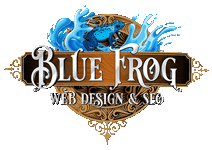Why SEO and Content Marketing Can’t Do Without One Another
Search Engine Optimization (SEO) and content marketing frequently follow one another in discussions of marketing. For years, the two have shared a perceived relationship of antagonism, as if they were competing in marketing strategies. However, the consensus has shifted in recent years, and the two are finally seen as the allies that they are. But what exactly are they, where do they overlap, and where do they differ? Let us explore these questions to argue why SEO and content marketing can’t do without one another.
What is SEO, and what is content marketing?
First and foremost, let us briefly define the two terms.
SEO is a series of practices that, as the name suggests, aim to optimize content for search engines. To do so, it adheres to Google’s (and other search engines) 200+ ranking factors, which range from loading speed and security certificates to page authority (PA) and user engagement. This function makes SEO an alluring investment in the modern digital marketing landscape.
In addition, to better focus on specific areas, SEO typically sees three main subsets:
- On-page SEO; on-page elements like images
- Off-page SEO: off-page elements like backlinks
- Technical SEO: technical health factors such as XML sitemaps
Content marketing is an umbrella term that describes content creation and, often hyper-focused, distribution. As such, it’s much more holistic and less technical than SEO.
From this cursory glance, one may wonder why SEO and content marketing cannot exist without one another. But this overlap is worth exploring to fully grasp the aforementioned perception shift we have seen in recent years.
The overlap between SEO and content marketing.
The two are demonstrably different; one can hardly argue they’re identical or indistinguishable. But where exactly do they overlap? For the sake of text economy, consider arguably the three most crucial aspects of both.
#1 Blog posts
The very first content type to bring up in such discussions is, understandably, blog posts. One may try different types of content; reviews, tutorials, and other blog content can work magnificently. But blog posts are the go-to broader content type for many, partly because they are accessible and cost-effective. SEO and content marketing will hinge on quality blog spots with a wide reach and reasonable conversion rates. As such, both will dictate that your blog posts share the same qualities:
- Length and depth: neither Google nor visitors will value short, shallow blog content.
- Formatting and layout: content marketing values readability, and SEO values the engagement metrics it produces.
- Freshness and value: Both acknowledge that “content is king,” so they hinge on delivering visitors factually accurate, interesting, and valuable content.

Moreover, this overlap spans content creation, from keyword research to keyword density and distribution, as we’ll cover below.
#2 Consistent output
Similarly, blog posts in particular aside, both strategies are continuous. SEO is notoriously laborious regarding a clear return on investment (ROI) – although much less so than many may claim – because it is, by definition, a long-term endeavor. One cannot “SEO” once and ensure unending success; algorithms, trends, and visitor behavior patterns change over time. Content marketing follows the same principle; it is a continuous, changing process, perpetually informed by analytics and data.
In brief, both heavily depend on consistent output—SEO for content freshness and engagement metrics and content marketing for marketing effectiveness. Thus, the two may naturally synergize and augment one another over time.
#3 Visibility
Finally, both seek to maximize your content’s visibility. Granted, they do so in different ways; SEO drives web traffic, while content marketing seeks audiences holistically. However, even if their means and express reasons for it differ, they practically still converge. In essence, we may consolidate this point to a single truism: SEO and content marketing are inseparable regarding visibility. Without content, SEO has nothing to rank. Without SEO, content does not rank in Google.

Still, the above are but general aspects of where the two overlap. To delve into more specific and equally crucial fronts, consider three marketing spearheads they both value: keywords, backlinks, and UX.
#1 Keyword research
Among the most common content marketing and SEO mistakes is poor keyword research. But keywords are the proverbial backbone of SEO and content marketing—keywords are what SEO ranks for, and keywords are what people search for.
Here, SEO lays the foundations of keyword research and application:
- General vs. long-tail keywords
- Latent Semantic Indexing (LSI) keywords
- Locally valuable keywords
- Keyword density per page
- Keyword relevance and overall value
It is only through such criteria that content marketing can effectively offer value to audiences. At the same time, SEO cannot rank poorly crafted content; both rightfully insist on content value. As such, the two work harmoniously in this fundamental way: SEO provides the insights that content marketing acts on.
#2 Backlinks
A similar front where the two converge perfectly is backlinks. Indeed, backlinks are crucial to any marketing strategy for numerous reasons:
- Page Authority: Follow links to boost your page’s authority and let it rank higher.
- Traffic: both Follow and NoFollow links generate more organic traffic.
- Engagement: backlinks typically bring more qualified visitors who actively seek your content.
In this regard, the two synergize to achieve this goal. Content marketing embraces that “content is king,” as Bill Gates asserted in 1996. SEO also accepts this as a truism because Google’s algorithms explicitly aim to deliver value. Thus, both enhance content value, from keyword focus and freshness to readability and presentation. These exact criteria allow content to earn backlinks and reap the above benefits.
#3 The user experience (UX)
Finally, the two overlap in terms of focus on UX. Content marketing relies on content providing an excellent UX to enhance effectiveness and, ultimately, conversion rates. SEO explicitly requires technical health in its On-Page and Technical SEO forms, which heavily affects UX. Specifically, consider such site-wide or page-specific UX factors as:
- Sitemaps, both HTML and XML ones
- Image metadata
- Page loading speed and responsiveness

These and other factors aim to improve the interaction quality of your site and pages. HTML sitemaps help visitors navigate your website, and XML ones help Google. Metadata helps contextualize on-page elements and increases accessibility for visually impaired visitors who use screen readers. Fast loading speeds and responsiveness reduce bounce rates while enhancing your SEO score. Thus, both SEO and content marketing require UX and strengthen it in their own ways.
Conclusion
Thus, we may reiterate that SEO and content marketing can’t do without one another. The two differ in scope, intent, and execution but overlap significantly. From embracing that “content is king” to bolstering and distributing it, the two are invaluable allies, almost by definition. A strong SEO strategy implies a solid content base; long-term content marketing needs SEO to see your content.
Photos used
https://www.pexels.com/photo/silver-imac-on-brown-wooden-table-6476591/
https://www.pexels.com/photo/person-holding-turned-on-silver-laptop-computer-261662/
https://pixabay.com/photos/google-on-your-smartphone-search-1796337/
https://pixabay.com/illustrations/website-sitemap-plan-layout-html-3407280/
Need help with your marketing?
Let my team help you like we’ve helped lots of other businesses dominate their rankings and attract better-quality leads.









